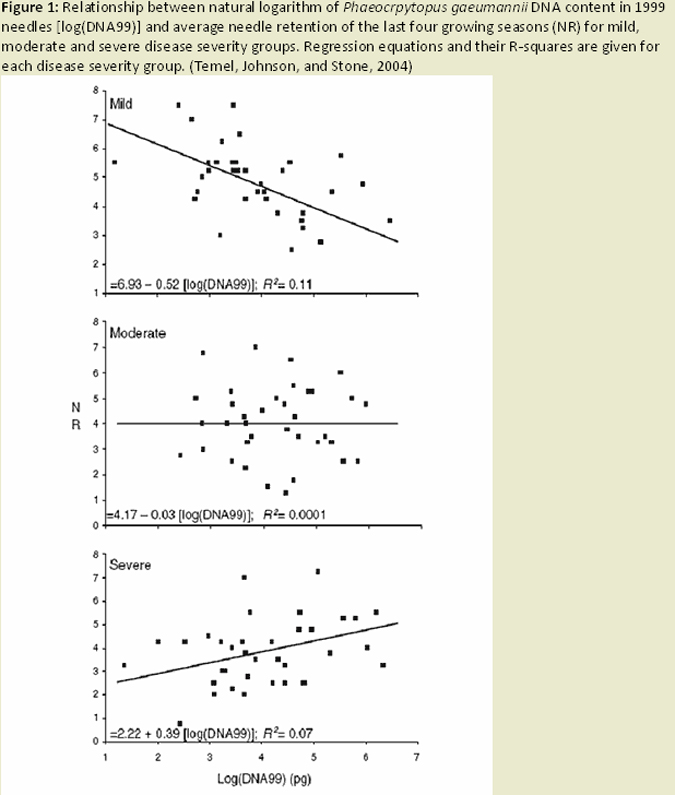Major research findings involving Swiss needle cast and its causal agent:
- Fertilizer influence on SNC disease severity across a gradient of disease: The Beyond N Study
- Effects and Impacts of SNC
- SNC Treatments
- Quantification, Assessment, and Severity Prediction
- Tree Genetics, Resistance, and Improvement
All cited publications are available on our Publications page.
The primary goals of tree improvement are to determine: 1.) if there is evidence of variation in economically important traits (i.e. volume growth or disease tolerance) between families, 2.) if economically important traits are linked or can be inherited together, and 3) the degree of genetic control over the desired traits. Gaining tree genetic information in relation to Swiss needle cast (SNC) is an important component of programs designed to develop Douglas-fir seed sources with genetic tolerant to SNC. Foliage traits (needle retention, crown density and color) are reasonable indicators of SNC tolerance, but appear to be under less genetic control to a lesser degree than growth rates (height, volume, DBH, and DBH increment). Of the foliage traits, crown density is seen as a better indicator of SNC tolerance than needle retention (Johnson 2002). Since growth-increment data are not always readily available for use in breeding programs, foliage traits can be a valuable tool, particularly for early-selections. Maguire et al. (2002) found needle retention a good predictor for growth loss at the stand level, and crown density may be the single best predictor (Johnson 2002).
Tolerance to SNC, not resistance, seems to be the important factor in genetic variation in SNC symptoms following infection by P. gaeumannii (Temel et al. 2004; Temel et al. 2005; Fig. 1). This is, in part, because all Douglas-fir trees are susceptible to infection by P. gaeumannii, but there is some evidence that Douglas-fir sourced from dry, inland areas experience relatively more fungal colonization than Douglas-fir from wetter, coastal locations. However, little differences in susceptibility were observed between Douglas-fir seedlings from different locations in the Oregon Coast Range. Tolerance refers to a trees ability to grow well in the presence of disease, while resistance refers to the trees ability to avoid or prevent infection. Genetic selection for SNC tolerance at the seedling stage has been shown to be successful for increasing tolerance in older trees (Temel 2005). Early testing of seedlings can eliminate poorly performing families at seedling stage before further testing, and allow for rapid screening of large numbers of already selected families so that the most SNC tolerant individuals can be used for seed orchards (Temel 2005). Selection of Douglas-fir genotypes with shorter needle longevity could increase forest productivity by removing infected needles sooner, thus limiting the net drain on carbon assimilation and growth (Manter et al. 2003).
Northwest Tree Improvement Cooperative Website
